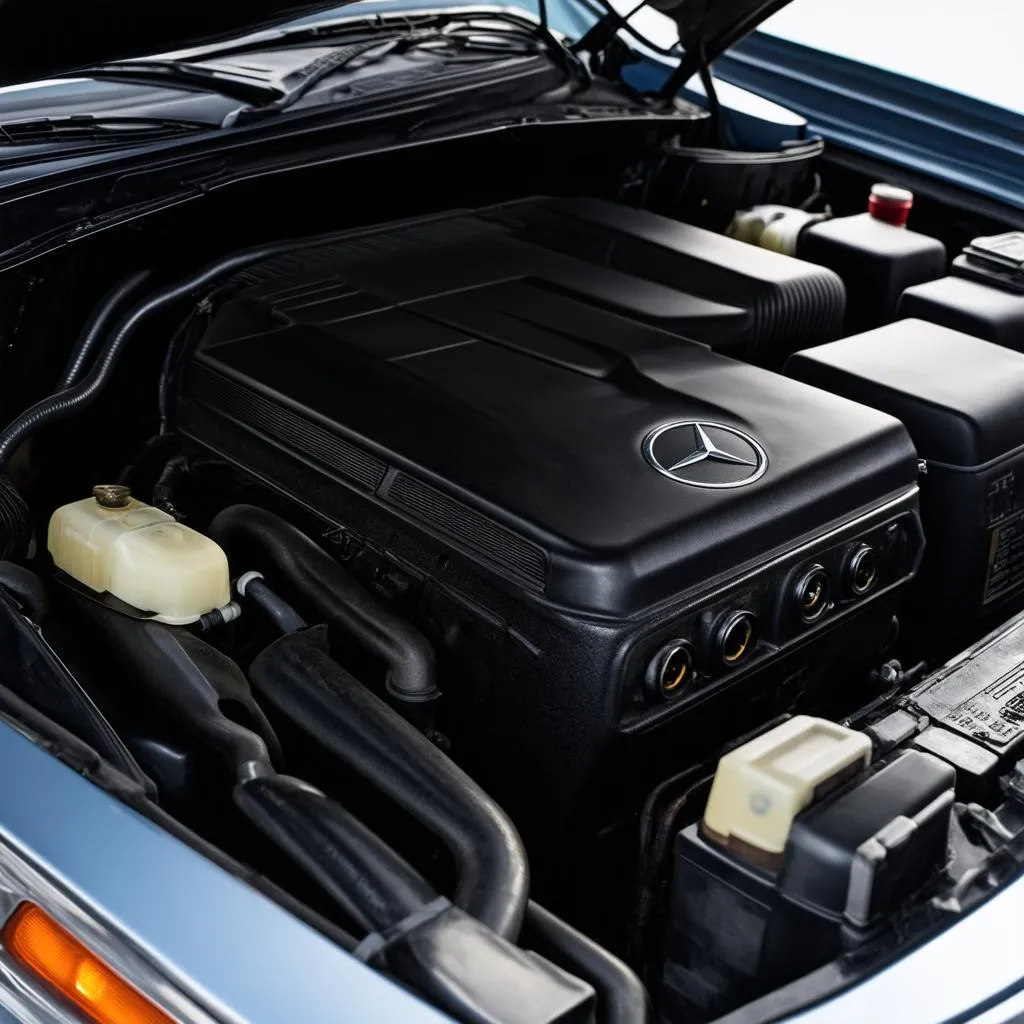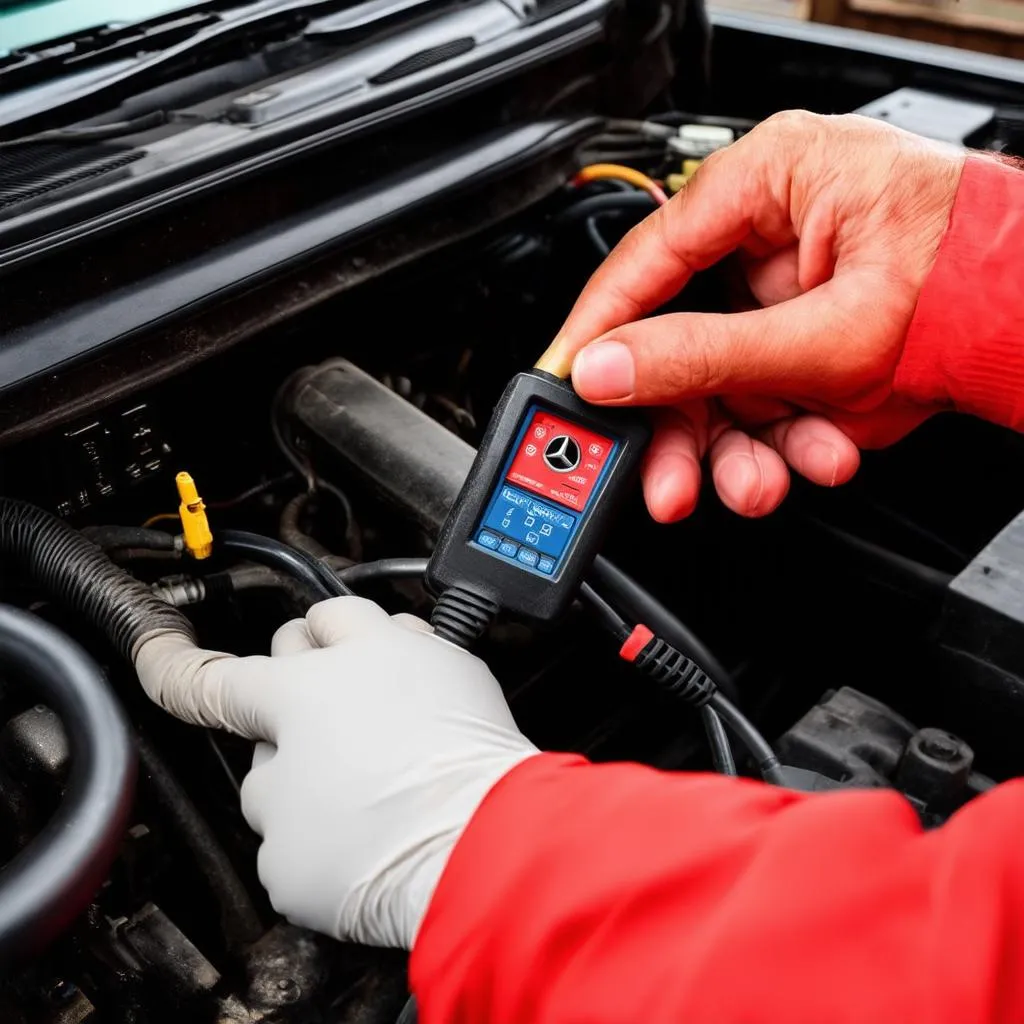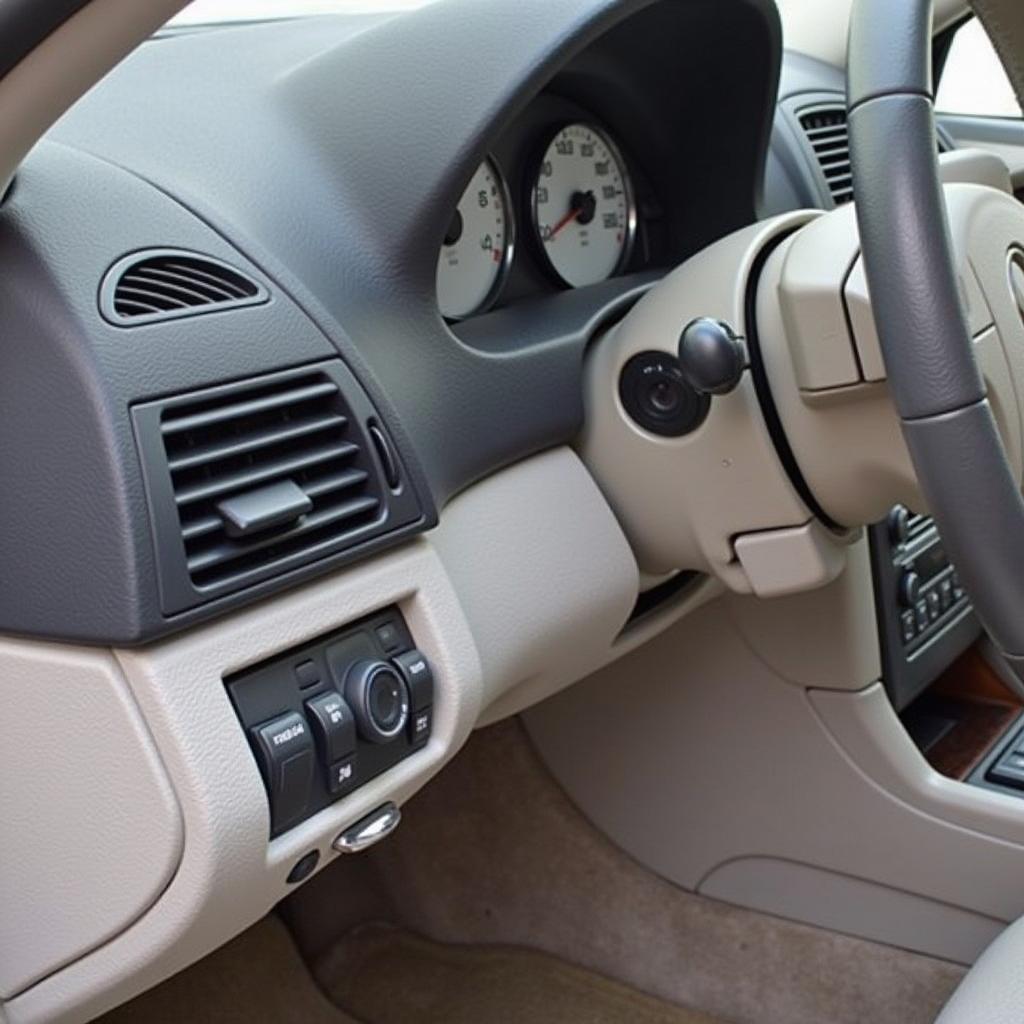The Mercedes-Benz W124, produced from 1984 to 1997, remains an icon of reliability and engineering excellence. However, even these automotive marvels require occasional maintenance and repair. This is where the Mercedes W124 diagnostic socket plays a crucial role, providing a vital communication link between your car and diagnostic equipment.
Understanding the W124 Diagnostic Socket
Before delving into the intricacies of the diagnostic socket, let’s clarify what it is and why it’s important.
This socket, often referred to as the OBD (On-Board Diagnostics) port, is the access point for retrieving diagnostic information from your W124’s engine control unit (ECU). Think of it as your car’s “black box,” storing valuable data about its performance and any potential issues.
“The diagnostic socket is essential for efficient troubleshooting,” says automotive engineer Mark Stevenson, author of “Automotive Electrical Systems Demystified.” “It eliminates guesswork, allowing mechanics and car owners to pinpoint problems accurately.”
Locating the Diagnostic Socket on Your W124
The location of the diagnostic socket can vary slightly depending on the model year of your W124. However, it’s typically found in one of these two places:
- Under the hood: Look for a round, 16-pin connector near the firewall on the driver’s side. It might be covered by a plastic cap labeled “Diagnostics” or have a similar marking.
- Inside the car: In some models, you might find the diagnostic socket beneath the dashboard on the driver’s side. Check the area around the steering column or near the fuse box.
 Mercedes W124 engine bay
Mercedes W124 engine bay
What Can You Do With the Diagnostic Socket?
The diagnostic socket unlocks a wealth of information about your W124’s health and performance. Here are some common uses:
- Reading and clearing fault codes: When your W124’s ECU detects an issue, it generates a fault code. By connecting a diagnostic tool to the socket, you can read these codes and decipher their meaning, helping you identify the root cause of a problem.
- Monitoring live data: Want to see how your engine is performing in real-time? The diagnostic socket allows you to access live data streams from various sensors, such as engine speed, coolant temperature, and oxygen sensor readings.
- Performing component activations: Need to test a specific component, like the fuel pump or the ABS system? With the right diagnostic tool, you can send commands through the socket to activate these components for testing purposes.
 Mechanic using a diagnostic tool on a Mercedes-Benz W124
Mechanic using a diagnostic tool on a Mercedes-Benz W124
Choosing the Right Diagnostic Tool
While the diagnostic socket is standardized, you’ll need a compatible diagnostic tool to communicate with your W124’s ECU. You have several options:
- Basic code readers: These affordable devices can read and clear basic fault codes, making them suitable for DIY enthusiasts.
- Advanced scanners: Professional-grade scanners offer a wider range of features, including live data monitoring, component activation, and advanced coding capabilities.
- PC-based software: For the tech-savvy, PC-based software combined with an interface cable provides a comprehensive and customizable diagnostic solution.
Frequently Asked Questions about the W124 Diagnostic Socket
Q: Can I damage my car by using the diagnostic socket?
A: Using a compatible diagnostic tool and following proper procedures poses minimal risk to your car’s electronics. However, it’s always best to consult your owner’s manual or a qualified mechanic if you’re unsure.
Q: What if I can’t find the diagnostic socket?
A: Refer to your W124’s owner’s manual for the exact location. If you’re still having trouble, consider seeking assistance from a Mercedes-Benz specialist or an experienced mechanic.
Q: Do I need special software to interpret the diagnostic codes?
A: While some basic code readers display generic code definitions, you might need specialized software or online resources to decipher Mercedes-specific codes and their meanings.
Conclusion
The Mercedes W124 diagnostic socket is a valuable asset for anyone who owns or maintains one of these classic vehicles. Understanding its location and capabilities empowers you to diagnose and address issues effectively, keeping your W124 running smoothly for years to come.
For further assistance and specialized diagnostic solutions, consider reaching out to CARDIAGTECH, a leading provider of automotive diagnostic equipment and software.


